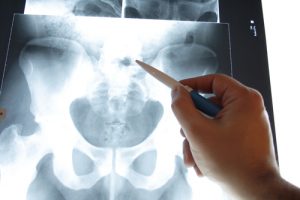People over the age of 50 aren’t checking on their bones as much as they should. This means there are fewer treatments for osteoporosis. If people don’t learn more about osteoporosis, breaking bones will be on the rise.

Breaking Bones is One the Rise
A lot of people are at risk of breaking bones, and doctors aren’t talking about the pros and cons of bone preserving drugs.
One serious change has already happened. There’s been a reversal in a 15-year decline of hip fractures among postmenopausal women. The study showed a decrease in hip fractures in women 65 and older on Medicare to 730 for every 100,000 in 2015. This is compared to 931 for every 100,000 in 2002.
But in 2012, the rate suddenly leveled off. If the pattern of decline continues, around 11,464 fewer women would have broken their hips between 2012 and 2015.
Bone Medication
Bone medication has shown that it helps reduce the chance of a second hip fracture.
Though one study of 22,598 people found that those who used the drug went from an already bad 15% of breaking a bone in 2004, to an even worse 30% in 2013.
Even though there are proper medications out there, people are choosing not to take them or are not getting them prescribed to them.
Breaking Hips is Expensive
Depending on how a hip fracture is treated, it can get pricey fast. The average medical costs for the first six months can range from $34,509 to $54,054.
Every year more than 300,000 people over 65 are hospitalized due to a fractured hip. Three-quarters of these patients are women.
It’s not just a money costs that come a fractured hip. Around 20% to 30% of patients die within a year after having a fracture. Those who do survive are never able to get around the same way again.
How to Help Your Bones
There is one suitable bone medication called Fosamax that came out in 1995. It’s a bisphosphonate that slows or prevents the loss of bone density. This makes stronger bones.
It’s now available as a generic called Alendronate.
People are afraid to take it, though. There has been overly aggressive marketing, and doctors were overprescribing it. Reports began to appear to link the continued use of bisphosphonates with two uncommon bone problems.
One being a very rare fracture of the femur, and the other is an even more unusual condition called osteonecrosis of the jaw. Fear of these two conditions caused a 50% decline in taking these medications.
The best thing you can do though is to take medication when needed, a good intake of calcium and vitamin D, and trying not to fall.
Read more here.

